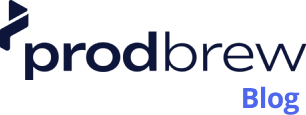Introduction
Speed is addictive. But in the world of SaaS, it’s easy to let fast launches burn everything down. That’s why releasing a product quickly without considering the implications feels good until it doesn’t.
Gaps. Headaches. Unmet promises. These are real-world consequences. Soon, customers notice. Teams crumble. And that pristine vision gets smeared in the frenzy of speed.
However, waiting until the cows come home is just as disastrous. It’s when perfection becomes the enemy of success.
Here’s how to avoid that crash while still hitting the gas.
Keep it simple and focus on core features
Forget the extras. Everything doesn’t have to be there on day one. Focusing on core features isn’t settling. It’s survival. The only thing users care about is whether your product does the job they need it to. All that other shiny stuff? It can wait. What matters is delivering something solid, something reliable.
So, you should :
Start with the essentials. What’s the problem you’re solving? Create the answer, not a million distractions.
Cut the fluff. Every extra feature you add takes you farther away from launch. Strip it down.
It’s not about one grand launch. It’s about continuous improvement. Build, release, learn, and repeat.
Short cycles win the race
Long development cycles are where projects go to die. Short sprints keep teams moving and the product evolving. Every cycle brings progress; every release offers feedback. This rhythm is about staying sharp and responsive. You learn faster, adapt quicker, and get the product in front of users without stalling for perfection.
Go agile by :
Getting rapid feedback to keep the project aligned with real user needs
Ensuring small releases to help the product be fresh and relevant
Use cross-functional teams to eliminate the waiting - the more hands involved, the longer it takes
Automate where you can
Repetitive tasks? Gone. Automated testing, CI/CD pipelines, and infrastructure management take the drudgery out of the process. Why waste hours on manual processes that slow down every release when smart automation can do it better and faster?
Here’s how it can help :
Test automation: Never trust human hands with testing. Automated tests catch the flaws before they’re deployed.
CI/CD pipelines: Continuous integration and deployment keep things flowing. No bottlenecks, no waiting for approvals.
Infrastructure as code: Scale without touching a thing. Automate the setup, updates, and scaling of your infrastructure.
Maintain quality through testing
Speed without quality is self-destruction. Testing is what keeps the chaos at bay. But testing doesn’t mean months of painstaking, manual effort. You can test and move fast if you integrate quality checks into every step of the process. Build your test plans from the start—automate them whenever possible.
Be sure to
Test early, test often. Don’t wait until the end. Integrate testing into every stage.
Use real-world scenarios. What happens in the lab doesn’t matter. Simulate real use cases.
Leverage automated regression tests. Every new release needs to pass the same bar. No more breaking old features when you add new ones.
Keep the team in sync
A fast product launch doesn’t mean letting teams scramble blindly. When everyone’s pulling in different directions, things break. Miscommunication slows everything down. Keep teams aligned and constantly communicating. Cross-functional collaboration is non-negotiable. Developers, designers, testers, and marketing should be all working in sync, no silos.
How this works :
Daily stand-ups: Short, sharp meetings to align goals and flag blockers
Shared documentation: Everyone sees the same plan, the same roadblocks
Transparent roadmaps: Let everyone know what’s coming next. No surprises
Outsource smartly
Sometimes, you need help. Building everything in-house can stretch your team too thin, leaving you with a bloated timeline and a half-baked product. Outsourcing specific tasks, whether it’s testing, development, or design, lets you focus on what your team does best.
Pick specialists. Don’t hand off core tasks. Outsource things your team shouldn’t be wasting time on.
Set clear deliverables. Make sure outsourced work doesn’t delay the project. Define what needs to be done and by when.
Establish ongoing communication. Just because something’s outsourced doesn’t mean it’s off your radar. Stay involved.
Remember to find the balance between speed and quality, between innovation and control.
You’re not aiming for perfection, just something that works. Something real, that users can engage with. And then, you iterate, making it better with each release.
Fast without reckless. Quality without delay.
That’s how you launch. That’s how your product succeeds quickly.

